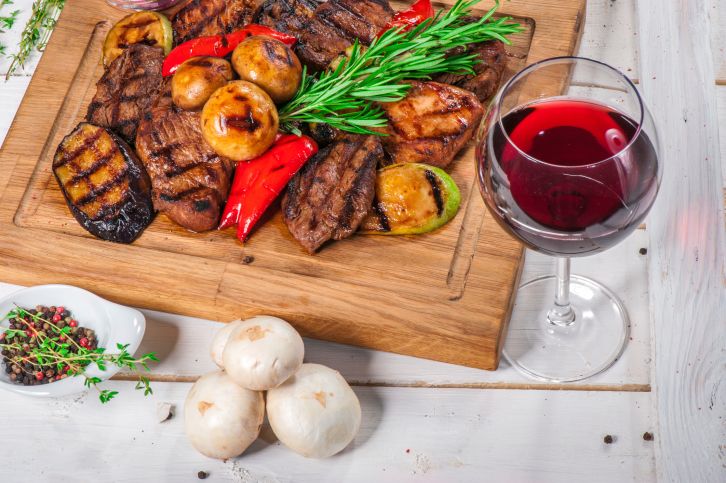
By Larry Mogelonsky, MBA, P. Eng. (www.lma.ca)
Year ago, my sister wrote a book entitled, “Everybody Eats.” While not particularly useful for the average hotelier, the title stuck with me. We spend an inordinate amount of time discussing spas, fitness centers, golf courses and other peripheral components to the our hotel/resort complexes. Yet, no single facet of your operations is likely to enhance your business more than great food.
Based upon my experiences, here are ten cost-effective ways to improve your F&B product. True, these may require operational changes or some new suppliers. But, by shaking up this department, you just might get some improved revenue and enhanced loyalty.
1. Coffee is king. Call in some local suppliers and see if you can get a local roaster to prepare beans for you. Because nothing beats the taste of a fresh roast. Train your staff on how to properly make coffee. Review your brewing equipment to ensure it is delivering the correct temperature and brew times. Very few pratfalls can spoil a breakfast or conference more than bad or cheap coffee.
2. Learn how to make and serve tea the British way. As a direct counterpart to good coffee comes the imperative for high quality, well prepared teas. Take those small metal pots designed to hold tepid water and throw them in the trash. Tea has to be brewed. The guest should not do the work themselves, even if all that’s required is dropping a tea bag in lukewarm water. Get some real tea blends and educate your staff on all the difference tastes, aromas and effects.
3. Evaluate your wine list with an eye towards local vineyards. Most guests will want to try good regional wines to complete their authentic local experience. Showcase one or two vineyards with good vertical selections. Include these wines with your other by-the-glass offerings, too.
4. No Coke, no Pepsi, so what? Maybe it’s just me, but I’m noticing a trend where all my friends have slowly weaned themselves off traditional soft drinks – too many refined sugars – opting instead for the flavored mineral waters. That makes me wonder if your non-alcoholic drink revenues could not be bolstered by adding these nouveau chic products: they’re not categorized as ‘pop’ nor as bottled water, but are in another class between the two.
5. Consider artisanal breadsticks. I’ve noticed that the breadsticks always seem to go first when served in a breadbasket full of assorted wheat stuffs. When asking my friends, the majority believe that they have fewer calories. Whether this is true or not, commercial (or locally created) breadsticks are an easy way to enhance your breadbasket without creating added complexity. And there are brands that deliver a plethora of tasty flavors to offer a little bit of variety to this table starter.
6. Fried chicken is making a comeback. At several high end restaurants I have noticed that fried chicken has been added to the menu, often as a daily special. Each time I’ve tried these soul foods at a premier eatery, the taste is sensational and an undisputed cut above their fast food equivalents (with none of the post meal queasy lethargy either). Asking the managers, they’ve confided that it is their most popular and profitable dish. What’s holding them back from offering it on every day? (Answer: their executive chefs don’t want their restaurants to be considered ‘fried chicken joint’.)
7. Fries are not to be taken lightly. I am not going to get into the pros/cons of offering fries on a menu. For many restaurants, they are critical. But if you serve them, please prepare them properly. There is no excuse for soggy, tasteless spuds. Check your fryers, your oil and your team. Look at options: sweet potato fires, wedges, shoestring fires, curly fries or pre-seasoned fries. There is no reason for them to be boring, or if they are, give each table some interesting dipping sauces besides vinegar, ketchup and mustard.
8. Surprise me. Give a guest a little extra for free. Often called an ‘amuse bouche’ (French for surprising the mouth), this pre-appetizer morsel is a way of the chef saying welcome. The cost is minimal and the guest will feel immediate value. As well, consider your patrons who enter your abode so hungry they are angry (‘hangry’ being the apt portmanteau). To them, the wait time before the arrival of appetizers or mains is much more likely to be considered an excruciating ordeal and a poor reflection on your restaurant’s service levels. Give them an ‘amuse bouche’ and watch these types of complaints evaporate.
9. Get the temperature right. Hot soups should be hot, not tepid. Ice cream should be ice cold. Improving processes and training should help to ensure that your chef’s creations can be effectively delivered to the customer in the manner in which they were designed to be consumed.
10. Shake up your menu with daily specials. Just like how supermarkets review shelf turns on products, so too should you look at your menu and drop the losers. They may be your chef’s favorites, but if they are not selling, they’re window dressing. Make room for daily specials, and monitor your successes. Consider your specials as the testing ground of new draft picks for your regular menu.
________
This article may not be reproduced without the expressed permission of the author.

